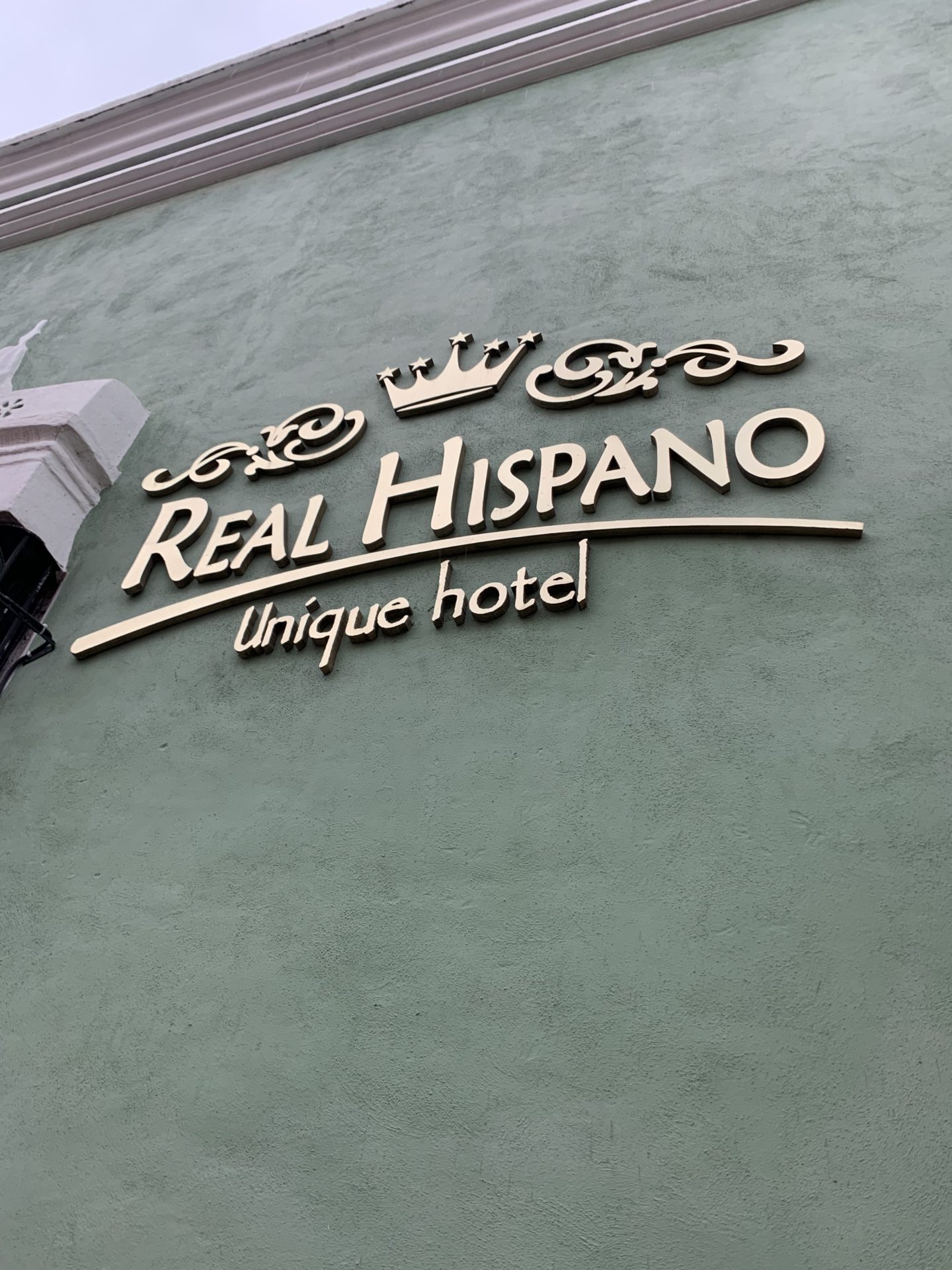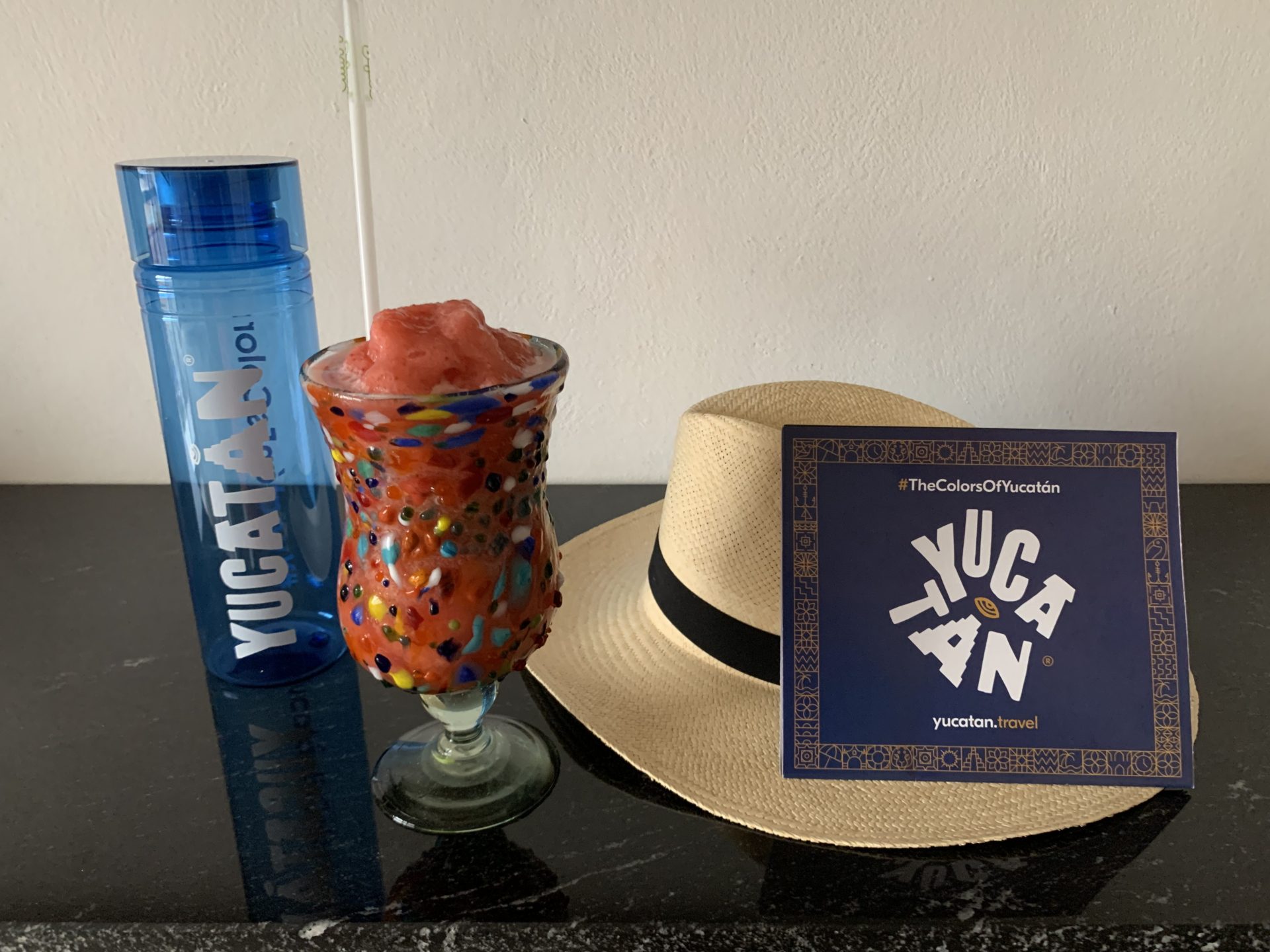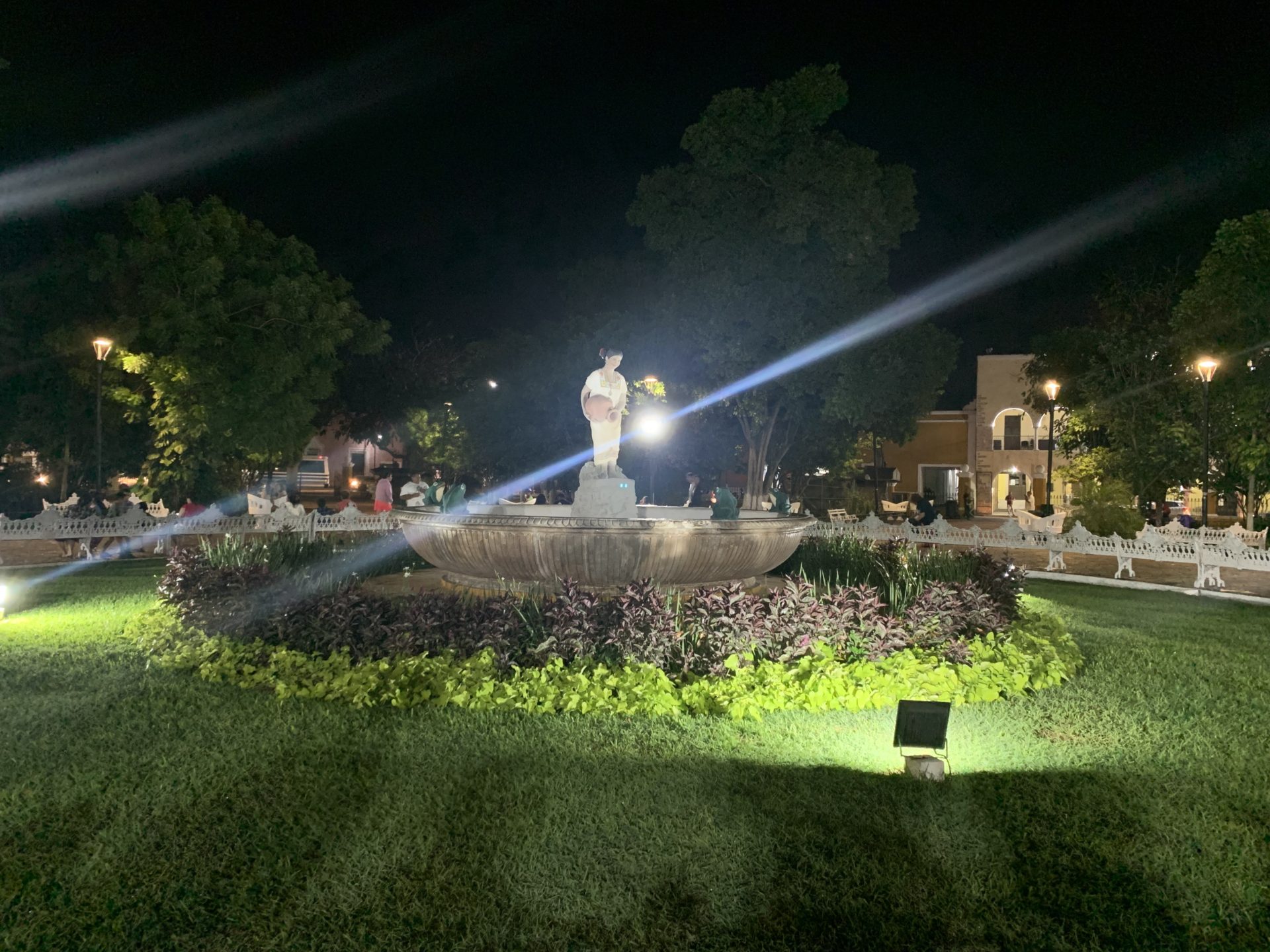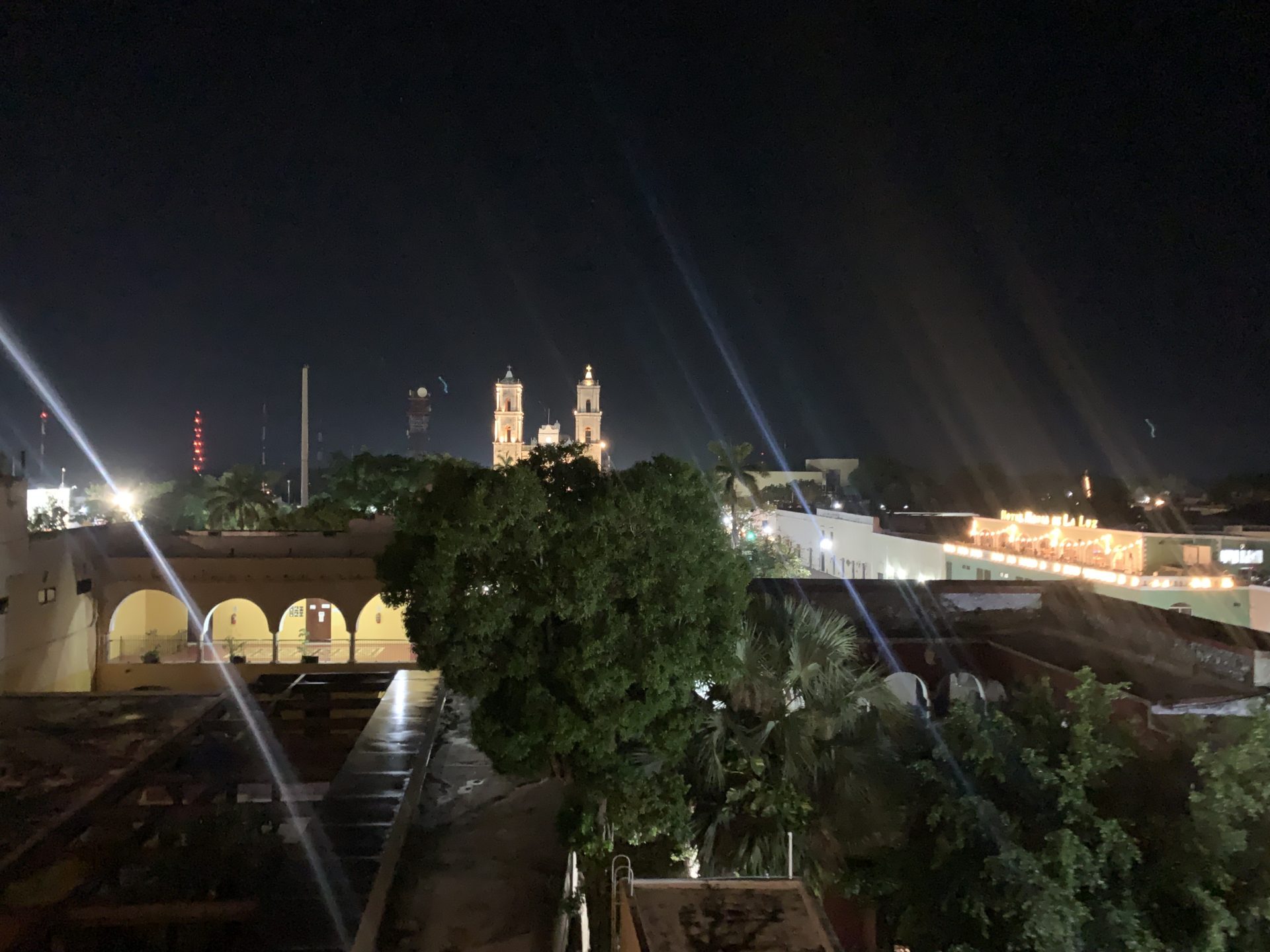
Often times, I need to travel to a city twice to really know that I like it. Sometimes the first trip is during a Pride celebration or a big gay weekend which leads me to ask, “Well, how is the city when it’s not pink washed or full of tens of thousands of out of towners celebrating?” And so a second trip is needed to see if there really is a good city presence, that there is a culture, a nightlife, a day life, gay acceptance, separate from the big queer celebration once a year.
My first trip to Merida was during a large tourism conference so there were just so many people and the schedule was go go go. I really did enjoy it, but my brain needed a second swing at this city.
My second trip to Merida was going to be a more eased exploration of the upper Yucatan peninsula with Merida being the final stop on our journey. Let’s see if after this trip, would I come back for a third.
Valladolid –
We took a quick Jet Blue flight to Cancun and took a transport to the Magical Town of Valladolid and checked into the Hotel Real Hispano for two nights.
Magic Town Meaning – a Pueblo Magico is a Mexican town granted Pueblo Magico status by the Mexican government for its “magical” qualities. This could be its beauty, historical importance, or its natural wonders.
Ultimately, the term “Pueblo Magico” is a mark of excellence and an excellent signal that the town is worth exploring for a day or two. – Journey Mexico
And I think 2 to 3 days is the perfect amount of time to explore Valladolid and its surroundings.
The hotel and its staff were very accommodating, its perfectly sized cooling-off pool called to us every time we walked by, and the hotel’s restaurant is a great food hot spot in town for every meal, but especially its brunch which could be enjoyed poolside.
While In Valladolid, here are some of the things we think you should check out. The Main Square of Valladolid and the fountain La Mestiza. This beautiful park has restaurants, bars, and shops that provide a chance to see the beauty of Mayan and Spanish fusion. When walking Valladolid, all roads seem to lead back to the square. It’s also easy to find your way back as the towering Church of San Servacio is along the town’s main square with its two towers and, in the middle, a shield carved in stone. Its construction began in 1543 and is one of the most emblematic buildings of the city. My room at the hotel happened to look at the church which was an added plus both day and night.
A wonderfully gay friendly place to check out is Colonté Hotel Origen. The beautifully landscaped property pays homage to the older style Mayan buildings as its gift shop and entry keeps that design alive. Its quaint pool and animal-named rooms and great dining area just made you feel you had everything you needed to relax right there. It’s a great soothing hug in the middle of Valladolid.
Walking around Valladolid, you can check out several wonderful shops, galleries, restaurants, and be sure to check out the Coqui Coqui Perfumer where you can sample perfumes, chocolates, and honey. Finish the Night at Don Diablo restaurant, which is on the rooftop overlooking the Main Square.
Las Coloradas – Think Pink, Crocodiles, & Mud Baths!
Ever wonder where pink flamingos got their pink color from? Well, for North America it is Las Coloradas. The 45-minute transport ride from Valladolid and Las Coloradas was comfortable and gave us a chance to see more of the Yucatán countryside. Not knowing what to expect, I looked up on the GPS satellite image and saw these large pink pools. When we got there, we hopped onto an open-sided transport and toured the salt production fields. We were mesmerized by the beauty in the multitude of pink shades that were present within the water. The pools started off with green-blue from the ocean to tan where some of the seawater had been evaporated to vibrant, purple, pink, violet, iridescent pools where salt collection was ready to begin. We were given a bag of salt as well as a crystalized chunk from the side of the road to keep. It was a hot day, but well worth it. As for the pink flamingos, google artemia salina.
After seeing the salt production fields, we took a quick ride to where we were able to get into a little boat and have a guided tour on the river. Rio Lagartos Adventures ecotours brought us through the estuary of the Ria Lagartos Biosphere Reserve where we saw American crocodiles as well as flamingos from a distance and “enjoyed” a mud bath (Baño Maya). Lunch followed at the local restaurant Ría Maya.
https://www.instagram.com/p/CuGKC0eAo-S/
Cenotes –
It’s a hole in the ground with water in it. Is that it? No, not really. It’s actually a fun entertaining time because sometimes you can’t see what’s at the bottom! Think relaxing time with a possible horror movie just waiting to break out. Some members of our group were more relaxed while others stayed on dry land and watched as they were in horror movie mode. I’ve visiting about 6 different cenotes as each one is unique. And each area outside of these cenotes is done with a different take or angle or nothing at all. Some cenotes are large and are very touristy while others try to, and successfully do, point back to the Mayan culture, agriculture, and food. Not all cenotes are swimmable, but all are just beautiful in their own right. If you get a chance to go to any cenote, bring your waterproof camera case and enjoy. Cenote Mucuyché was one of our stops, one I had visited before, but briefly and did not have time to go into the water. The restaurant, the changing areas, and the two-for-one cenotes aspect was great. We went down to the first cenote at Mucuyché which was kind of a ½ opened cavern with an attached channel in the earth to a waterfall. The second cenote on the property was one that was fully enclosed and you had to walk through a tunnel to enter its dark and actually very romantic environment. Underwater lights made the ceiling dance in a crystalized fashion. On another day during this trip, we visited Cenote Tsukán which is one of my favorites as it is relaxing, surrounded by historical and educational exhibits, but also … you cannot see the bottom and there are holes in the wall where you don’t know what is in there. Thanks again to Merida Gay Tours for bringing us to a spot they’re claiming is “The New Best Thing in Yucatan.“
https://www.instagram.com/reel/CuGPN6jgI8p/
Mayan Ruins –
It seems they are finding more Mayan ruins and they’re even finding out more information about the Mayan ruins they’ve known about for hundreds of years. This was my second visit to Chichen Itza and Uxmal and I think I enjoyed these visits more than the first. Just like with any tour company, tour guides will have a different take on the history, know a little different facts, embellish a little more here and there, and the tour of Chichen Itza was all of that. Chichen Itza is arguably the most visited of the ruins as over 7,000 people visit on the average every Sunday so choose your day to visit wisely. The original Uxmal tour I had was at night and used music and video projections to tell the history while this tour was during the day and with a guide that spoke English to the group. Uxmal is not as heavily visited as Chichen Itza which means smaller crowds usually, but it is still as beautiful and breathtaking. Both sites are undergoing massive restorations on new exhibits and newly uncovered building which is amazing to see and if you look past the trees, you will see there is so much more to explore.
Merida –
The city is known as The White City. If you look at an overhead satellite image, you can clearly see that Merida is a white dot in the Yucatán Peninsula, but it goes beyond that as historically Merida was established as a city where only whites and the elite could live or be in. Things, of course, have changed since the archaic rule of the Spaniards as all seem welcome now, and all are able to enjoy the beauty, simplicity, and history that is on display.
If you’re looking for a touch of Paris in Mexico, Paseo Montejo is a French style majestic avenue named after the conquistador Francisco de Montejo who founded Merida in 1542. Luxurious haciendas were built around 1888 during the wealth boom of the Henequen (a plant native to Yucatan), but many of them have been converted into restaurants, boutique hotels, museums, banks, and wedding and event locations.
For a wonderful hotel experience with an amazing breakfast, rooftop pool deck, and purple and yellow accents galore, consider Camino Real Merida. It’s not hard to miss this new and mirrored structure as it is one of the tallest and shiniest buildings in the city.
With an intimate vibe, quality service and a characteristic identity, Camino Real Merida a 5-star hotel is a place where relaxation and luxury go hand in hand. The new member of the Hoteles Camino Real family is located within the City 32 Shopping Center.
For a culinary treat, be sure to check out Holoch, offering unique takes on authentic Yucatan foods. Other restaurants will offer their take on historic and local favorites like Lime Soup, Cochinita Pibil, Poc Chuc, Papadzules, Habanero chili, and more.
And for the gayness and gay offerings in Merida, check out our previous post – Merida – One of the Safest Cities in the World has a great Gay Side.
I’m looking forward to my next Merida trip as I want to explore more of the city and meet some more of the locals. The variety of authentic Mayan food and elevated cuisine paired with a hospitality that makes you feel so welcome in Spanish or English, the city knows that tourism is key and the inhabitants seem to appreciate people that are there to enjoy their city and the Yucatan region.

















Myself & 6 of my closest gay friends travel all over the world twice a year, will have to put this on our list of places to go.